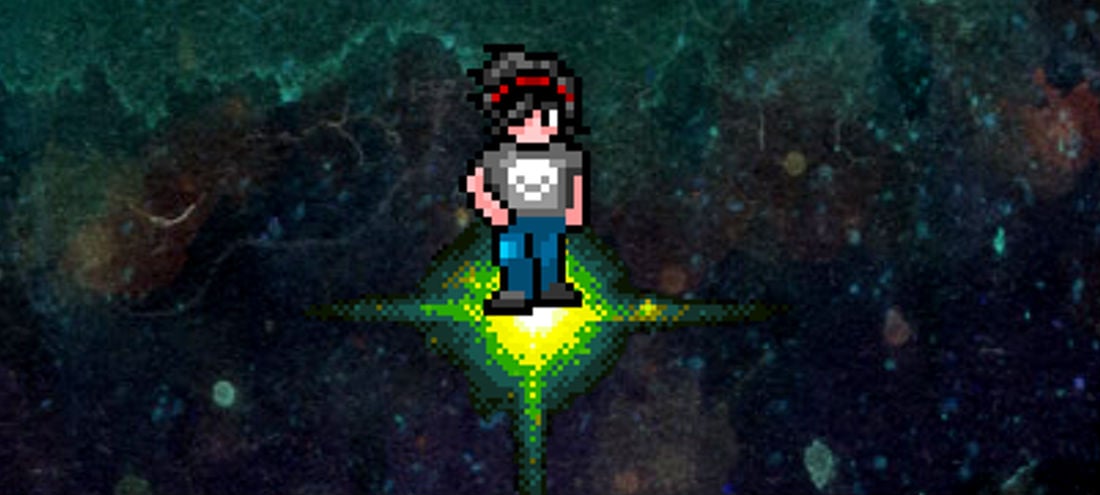Taming strange
[Disclosure: High Strangeness was developed in part by Destructoid community member Ben “AgentMOO” Shostak. As always, no relationships, personal or professional, were factored into the review.]
Back in 2009, a small group of developers had an idea, so they took to the relatively unknown Kickstarter platform to raise money for it — it was among the first gaming-related projects on the site. They earned $1500, and for the past six years, have been diligently working on this “passion project” for an eventual PC and Wii U release.
Tomorrow, that dream becomes a reality, when High Strangeness launches on Steam and the eShop for $9.99.

High Strangeness (PC [reviewed], Wii U)
Developer: Barnyard Intelligence Games
Publisher: Midnight City
Released: May 6, 2015
MSRP: $9.99
High Strangeness is a simple tale of a young man named Boyd. He has a cat, he lives a simple life — until shadow people invade his hometown and set into motion a series of events that will change his world forever. Sound familiar? Strangeness is meant to evoke the feeling of an old school RPG, using elements of both 8-bit and 16-bit adventures, meshing it into what the developer calls “the 12-bit realm.”
It definitely has an EarthBound-like feel to it, with snappy jokes, real-life oriented weapons like a flashlight and firecrackers, and an otherworldly plot. The writing has the charm of a typical Pokémon game, with cute jokes that are often very meta in nature, but not to the point of just repeatedly spouting obnoxious memes. I never really felt any attachment to the cast or the setting, but the era-appropriate dialog definitely helps along the way. Boyd will fight said shadows mostly by way of his flashlight melee attack, but he’ll also have a few other tricks up his sleeve, like the aforementioned firecracker bombs, a set of CDs that basically function like Zelda‘s arrows, and more far-out weaponry like the power to control a shadow clone.
Combat mainly consists of old school hit and run gameplay, with a stamina meter in tow to prevent you from mashing the attack button. It’s rudimentary, but it works, especially when you start to experiment and realize that every weapon is viable. My favorite bit about High Strangeness is the fact that you earn upgrade tokens for every kill (even normal enemies). Since these item or skill enhancements are actually quite useful, it creates a nice incentive to get your hands dirty as often as possible.
The main gimmick however is definitely the concept of plane switching, which you’ll unlock roughly 30 minutes in. With the press of a button you can phase between the default 16-bit world and an 8-bit realm, fundamentally changing the way everything works. Some enemies will be easier or tougher depending on what world you’re in, and mechanically, basic gameplay changes as well. Boyd can use combos and run in the 16-bit era, but only attacks with one thrust at at time and moves in a grid-like fashion in 8-bit, and so on.
The switch isn’t instantaneous (it takes a few seconds) so it’s not worth it to constantly change, but it is fun to see enemies in a new light or try out new tactics at will. Plus, some puzzles can only be solved by toggling planes, so you’ll need to do it every so often — thank goodness it doesn’t get annoying. Because the game is faster paced in the 16-bit visual style I vastly preferred it over 8-bit, and felt like the latter could have used a few extra touches in terms of a unique feel.
While it does have a certain amount of charm, High Strangeness is a very linear adventure. Puzzles usually don’t take more than a few minutes at a time to solve, and when all is said and done, you’ll probably breeze through it in roughly five hours. There is a very cool final boss at the end, but sadly, there’s no additional difficulty settings or a New Game+ option, so what you see is what you get.

There are also a few wrinkles, like the health and stamina UI that doesn’t stay locked in one place, and moves if you get too close to it on the screen. Since the game has some dead space due to the constrained aspect ratio, I wish there were an option to keep it static. Additionally, I wish there were a “quick item switch” button, since pausing the game to change secondary weapons isn’t ideal.
High Strangeness might be a brief adventure that feels a bit shallow at times, but it’s very easy to digest. Because of the short nature of the game it doesn’t waste your time, and it’s very easy for anyone — retro enthusiast or not — to pick up and play.
[This review is based on a retail build of the game provided by the publisher. I did not back the Kickstarter campaign.]










Published: May 6, 2015 11:00 am